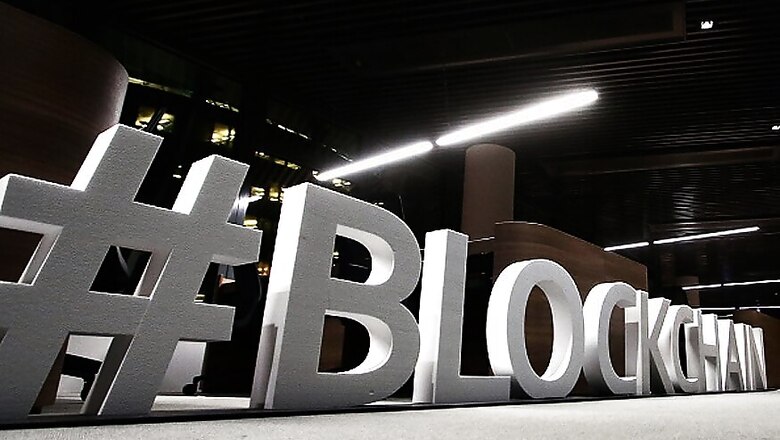
views
Within days of the now infamous Nirav Modi case becoming public, I was tagged on Twitter by several people wanting to know if blockchain could have prevented it from happening. This is a large question that can’t be addressed in 140 or even 280 characters. Nevertheless, the idea is beginning to gather force, and little soundbites in this direction are beginning to be heard.
In a country like India, where large businesses routinely default on loans to public banks, is there a blockchain silver bullet?
It all depends on what you mean by blockchain. There is blockchain with a small b, which should really be called Distributed Ledger Technology (DLT). This can be used to beef-up interbank protocols and may have ensured slightly higher security standards. But such DLT solutions would eventually also have been circumvented by Nirav Modi’s accomplices inside and outside PNB Bank because the failure here was just not at the level of technology — it had to do with the design of the system of trust through which the institution operated. While redesigning trust does have something to do with blockchain, it comes into play at a much larger and systemic level.
Kevin Werbach, in his seminal piece ‘Trust but Verify’, speaks of three different architectures of trust.
The first runs horizontally: I buy you a coffee, you buy me a soft drink. I buy you a beer, and you buy me a sandwich. We know each other well enough to know that our accounts will always be even. This form of trust can sometimes work quite well, even for large amounts. This has been seen in India among mercantile families and even in the case of cross-regional and trans-national informal settlement systems called hawala.
The second runs vertically: You present a cheque from a known and respected organization like PNB, which has a governmental banking license and ask me to honour it. I do so because I trust PNB and, moreover, I know that PNB enjoys both recognition and regulation by the State and this gives me even greater confidence in trusting their cheque.
Now consider what happens when the first form of horizontal trust intersects with the second form of vertical trust: Senior bankers see Nirav Modi hobnobbing with the Prime Minister in Davos and it is generally assumed that he has close linkages with the current government. He receives special attention and care when in the hands of senior banking officials. Nothing very noteworthy is going on here. Just well-known and well-placed members of society carrying on in their usual ways to bring growth and prosperity for all. All of this, up until the point when someone abuses their horizontal and vertical forms of trust. More particularly, this particular someone leverages their horizontal trust to compromise the vertical architectures of trust that organise the institutions of society.
Trust is a human, social, intersubjective phenomenon. You trust people and everything works fine until those rare cases where it doesn’t. In such cases, you need enforcement and punitive action, which in India’s case is often weak. Those perceived to be close to the government of the day already seem to know the most opportune moment to flee the country.
The big-B Blockchain paradigm is not about increased technical security for banks whose risk exposure is poorly managed by their senior officials. It is about assuming that anyone who can take advantage of a poorly designed system will do so, and therefore the system must always be able to withstand such attacks. It is about moving away from trusted intermediaries, introductions, and assumed trustworthiness towards the automatic and market enforcement of transparent rules regardless of who you are and whom you know. According to Werbach, this is the third large paradigm of trust, what he calls ‘trustless trust.’
In trustless systems, many distributed participants in a network work together to arrive at a consensus for a given case – in a public and transparent manner – often without even knowing the actual identity of the individuals affected by the given case. This trend is broadly called decentralisation, and it represents an organizational and technical paradigm which is reshaping how we create value around the world.
Decentralised organisations operate according to a consensus algorithm that prevents anyone from exerting undue influence or subjective judgement. These new kinds of organisations promise to work more efficiently, more accurately, and with more skin-in-the-game than existing structures. In my own work with accelerator program Startereum, for example, I am involved with building a distributed means for a large number of people to discover and onboard value creating engines of growth on to our platform.
Centralised institutions of all kinds, including banks, financial service companies, and investment channels will soon be under increased competitive pressure from new alternative institutions that work in a decentralised manner. These new alternatives might have hundreds and thousands of hands coming together online to transparently approve normal business or financial transactions. Decentralised financial systems will prove resistant to the kinds of losses that PNB has suddenly shown. Incumbent institutions, therefore, will either reorganise as trustless versions of their earlier incarnations or find it harder to compete.
This is the way in which the Blockchain paradigm can eliminate big-ticket coordinated corruption between highly networked individuals and banks.
(Aditya Dev Sood is one of the founders of accelerator program Startereum – a platform and community dedicated to curation, co-creation and funding of scalable ventures. Views are personal.)



















Comments
0 comment